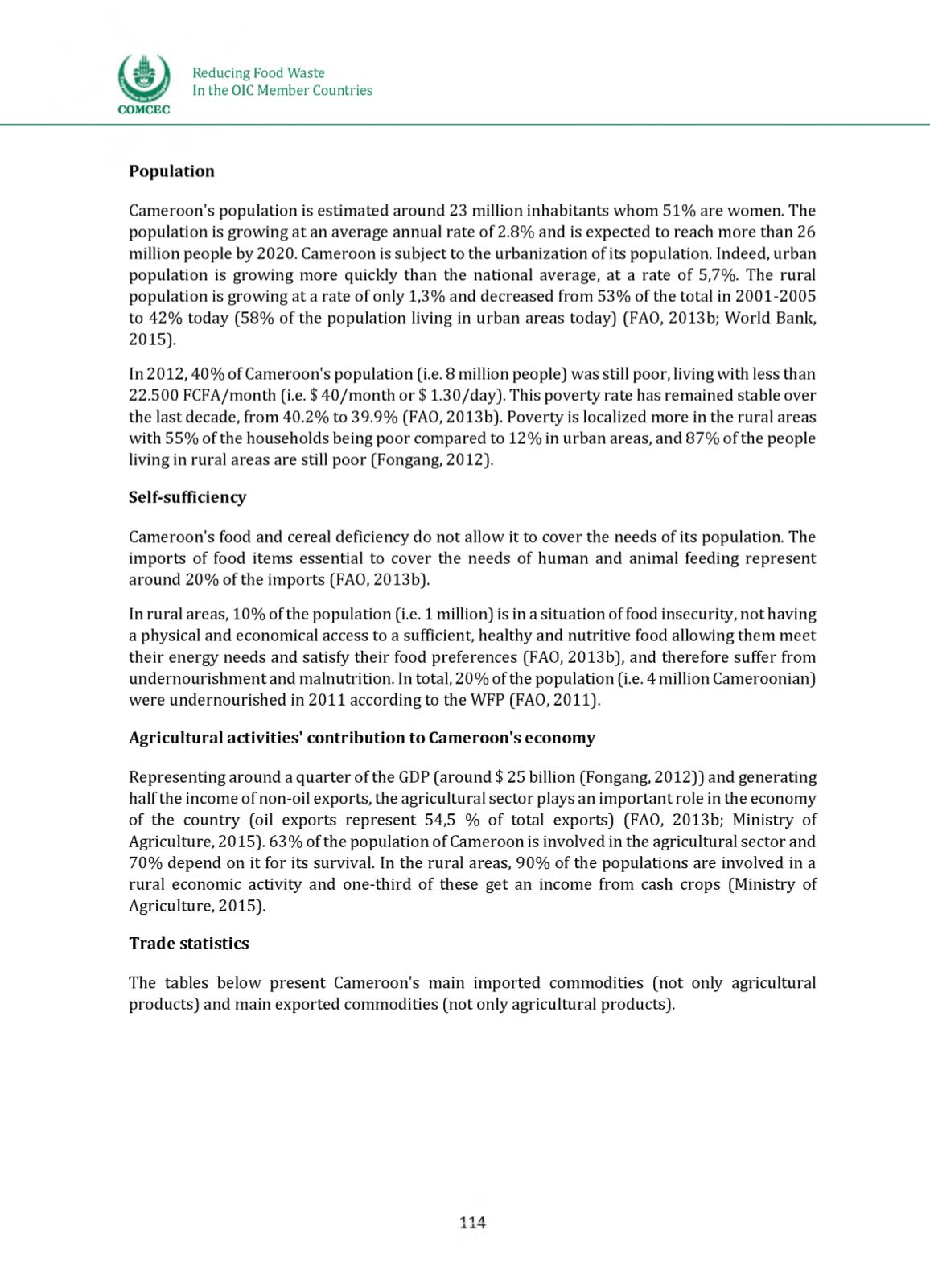

Reducing Food Waste
In the OIC Member Countries
COMCEC
Population
Cameroon's population is estimated around 23 million inhabitants whom 51% are women. The
population is growing at an average annual rate of 2.8% and is expected to reach more than 26
million people by 2020. Cameroon is subject to the urbanization of its population. Indeed, urban
population is growing more quickly than the national average, at a rate of 5,7%. The rural
population is growing at a rate of only 1,3% and decreased from 53% of the total in 2001-2005
to 42% today (58% of the population living in urban areas today) (FAO, 2013b; World Bank,
2015).
In 2012, 40% of Cameroon's population (i.e. 8 million people) was still poor, living with less than
22.500 FCFA/month (i.e. $ 40/month or $ 1.30/day). This poverty rate has remained stable over
the last decade, from 40.2% to 39.9% (FAO, 2013b). Poverty is localized more in the rural areas
with 55% of the households being poor compared to 12% in urban areas, and 87% of the people
living in rural areas are still poor (Fongang, 2012).
Self-sufficiency
Cameroon's food and cereal deficiency do not allow it to cover the needs of its population. The
imports of food items essential to cover the needs of human and animal feeding represent
around 20% of the imports (FAO, 2013b).
In rural areas, 10% of the population (i.e. 1million) is in a situation of food insecurity, not having
a physical and economical access to a sufficient, healthy and nutritive food allowing them meet
their energy needs and satisfy their food preferences (FAO, 2013b), and therefore suffer from
undernourishment and malnutrition. In total, 20% of the population (i.e. 4 million Cameroonian)
were undernourished in 2011 according to the WFP (FAO, 2011).
Agricultural activities' contribution to Cameroon's economy
Representing around a quarter of the GDP (around $ 25 billion (Fongang, 2012)) and generating
half the income of non-oil exports, the agricultural sector plays an important role in the economy
of the country (oil exports represent 54,5 % of total exports) (FAO, 2013b; Ministry of
Agriculture, 2015). 63% of the population of Cameroon is involved in the agricultural sector and
70% depend on it for its survival. In the rural areas, 90% of the populations are involved in a
rural economic activity and one-third of these get an income from cash crops (Ministry of
Agriculture, 2015).
Trade statistics
The tables below present Cameroon's main imported commodities (not only agricultural
products) and main exported commodities (not only agricultural products).
114
















